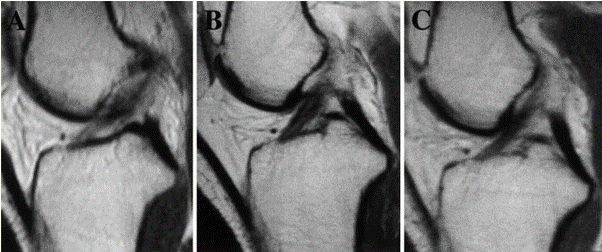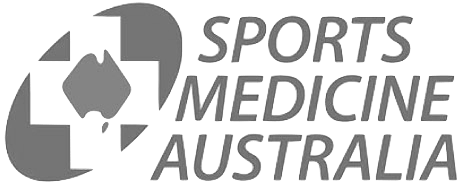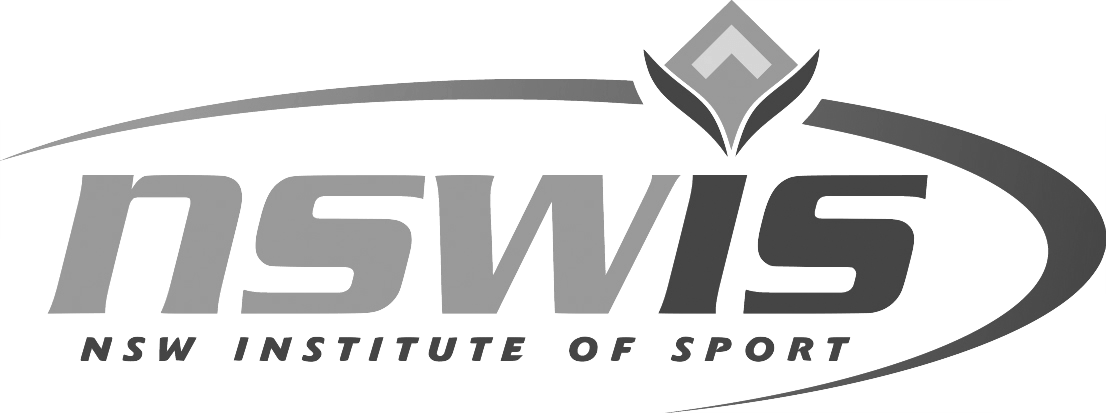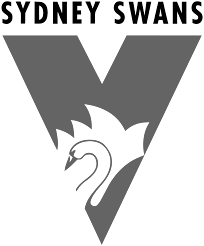Acute ACL Bracing Protocol
What are the Signs of an ACL Injury?
Anterior Cruciate Ligament (ACL) injuries tend to occur with hyperextension or rotational forces on the knee.
Often the player will report immediate pain and need to leave the field. A sensitive sign of an ACL rupture is rapid development of marked swelling in the knee over the course of about the first hour. This is usually due to the bleeding that occurs with the ligament rupture, and is called a haemarthrosis.
A doctor or physiotherapist can use clinical tests to determine the function (or lack thereof) of the anterior cruciate ligament by stressing it gently.
An MRI is recommended for any suspected internal knee problem that leads to marked swelling and pain, and you should see a doctor or your GP immediately if this occurs.
Can I try bracing my ACL injury?
While surgery has been considered the gold-standard management for an ACL rupture, over the past decade, we have seen a few case reports and case series of ACL ruptures healing with rest and or bracing. This has generally resulted in full healing seen on MRI and with clinical tests. It does not automatically mean that patients are able to return to sport with a stable knee and rehabilitation is always required.
Dr Merv Cross and Dr Tom Cross are acknowledged in developing a formalised bracing protocol based on experimental studies of ACL biomechanics, clinical experience and a current trial that is showing promising outcomes. Please contact the Stadium Clinic for further details.
There have even been reports of athletes returning to elite level sport WITHOUT an intact ACL. This is rare, but a testament to the adaptability of the human body and particularly in older athletes with extremely advanced motor skills and coordination. While return to straight line sports can be considered in most people who feel stable during daily activities, the risk of returning to pivotting sports without an intact ACL is that further damage can be done to the other structures in the knee, particularly the meniscus cartilages. This can lead to pain and the requirement for surgery.
Bracing is an option designed to maximise the chance for healing of the ACL, in a position of minimal tension on the ligament. After full medical assessment, it can be trialled in most patients.
What is the ACL Bracing Protocol?
There are various bracing protocols. The protocol with the most recent research validation is called th CBP or "Cross Bracing Protocol".
Contact The Stadium Clinic Sydney, for further information.
What are the Potential Side Effects and Can I Change to Surgical Repair?
At any stage of this process, a patient that was considered appropriate for a bracing protocol can chose to undergo surgical reconstruction of the ACL. The only downsides to bracing are the loss of time, increased stiffness, discomfort of the brace and DVT risk. Having your own, native ACL and avoiding surgery should be considered a better outcome but is not always practical or medically responsible (e.g. unstable meniscal tear with ACL rupture).
Reference List
1. Nagai T, Schilaty ND, Strauss JD, Crowley EM, Hewett TE. Analysis of Lower Extremity Proprioception for Anterior Cruciate Ligament Injury Prevention: Current Opinion. Sports Med. 2018 Jun;48(6):1303–9.
2. Ahn JH, Chang MJ, Lee YS, Koh KH, Park YS, Eun SS. Non-operative treatment of ACL rupture with mild instability. Arch Orthop Trauma Surg. 2010 Aug;130(8):1001–6.
3. Costa-Paz M, Ayerza MA, Tanoira I, Astoul J, Muscolo DL. Spontaneous Healing in Complete ACL Ruptures: A Clinical and MRI Study. Clin Orthop. 2012 Apr;470(4):979–85.
4. Jacobi M, Reischl N, Rönn K, Magnusson RA, Gautier E, Jakob RP. Healing of the Acutely Injured Anterior Cruciate Ligament: Functional Treatment with the ACL-Jack, a Dynamic Posterior Drawer Brace. Adv Orthop [Internet]. 2016 [cited 2018 Jul 14];2016. Available from: https://www.ncbi.nlm.nih.gov/pmc/articles/PMC5174171/
5. Smith SD, Laprade RF, Jansson KS, Arøen A, Wijdicks CA. Functional bracing of ACL injuries: current state and future directions. Knee Surg Sports Traumatol Arthrosc Off J ESSKA. 2014 May;22(5):1131–41.
6. Grindem H, Snyder-Mackler L, Moksnes H, Engebretsen L, Risberg MA. Simple decision rules can reduce reinjury risk by 84% after ACL reconstruction: the Delaware-Oslo ACL cohort study. Br J Sports Med. 2016 Jul;50(13):804–8.
7. Myklebust G, Engebretsen L, Braekken IH, Skjølberg A, Olsen O-E, Bahr R. Prevention of noncontact anterior cruciate ligament injuries in elite and adolescent female team handball athletes. Instr Course Lect. 2007;56:407–18.
8. Hewett TE, Ford KR, Myer GD. Anterior cruciate ligament injuries in female athletes: Part 2, a meta-analysis of neuromuscular interventions aimed at injury prevention. Am J Sports Med. 2006 Mar;34(3):490–8.
9. Salmon L, Russell V, Musgrove T, Pinczewski L, Refshauge K. Incidence and Risk Factors for Graft Rupture and Contralateral Rupture After Anterior Cruciate Ligament Reconstruction. Arthrosc J Arthrosc Relat Surg. 2005 Aug;21(8):948–57.
10. Alentorn-Geli E, Mendiguchía J, Samuelsson K, Musahl V, Karlsson J, Cugat R, et al. Prevention of anterior cruciate ligament injuries in sports. Part I: systematic review of risk factors in male athletes. Knee Surg Sports Traumatol Arthrosc Off J ESSKA. 2014 Jan;22(1):3–15.
11. Alentorn-Geli E, Mendiguchía J, Samuelsson K, Musahl V, Karlsson J, Cugat R, et al. Prevention of non-contact anterior cruciate ligament injuries in sports. Part II: systematic review of the effectiveness of prevention programmes in male athletes. Knee Surg Sports Traumatol Arthrosc Off J ESSKA. 2014 Jan;22(1):16–25.
12. Lewis DA, Kirkbride B, Vertullo CJ, Gordon L, Comans TA. Comparison of four alternative national universal anterior cruciate ligament injury prevention programme implementation strategies to reduce secondary future medical costs. Br J Sports Med. 2016 Dec 19;
13. Sugimoto D, Myer GD, Barber Foss KD, Pepin MJ, Micheli LJ, Hewett TE. Critical components of neuromuscular training to reduce ACL injury risk in female athletes: meta-regression analysis. Br J Sports Med. 2016 Jun 1;












